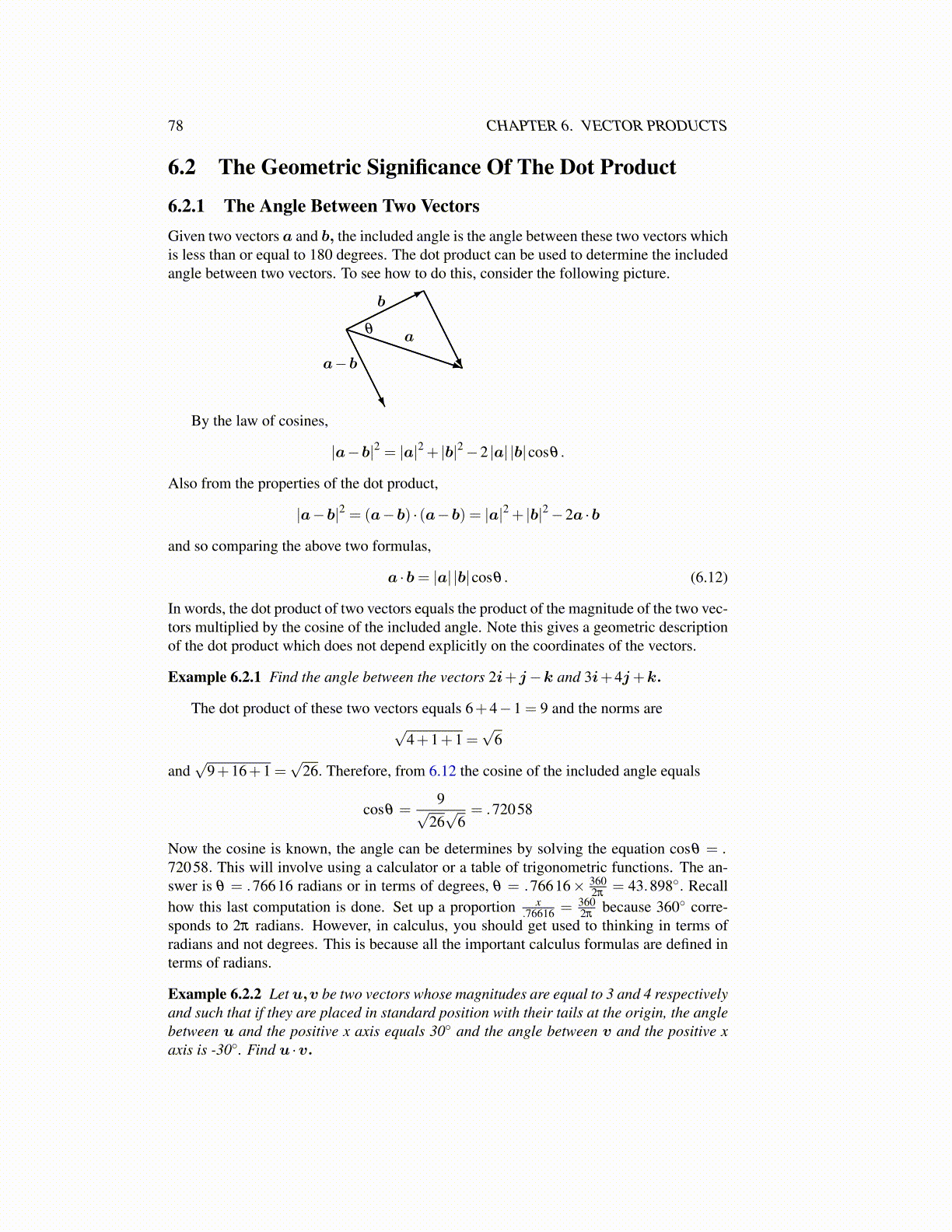
78 CHAPTER 6. VECTOR PRODUCTS
6.2 The Geometric Significance Of The Dot Product
6.2.1 The Angle Between Two VectorsGiven two vectors a and b, the included angle is the angle between these two vectors whichis less than or equal to 180 degrees. The dot product can be used to determine the includedangle between two vectors. To see how to do this, consider the following picture.
b
a
a−b
θ
By the law of cosines,
|a−b|2 = |a|2 + |b|2−2 |a| |b|cosθ .
Also from the properties of the dot product,
|a−b|2 = (a−b) · (a−b) = |a|2 + |b|2−2a ·b
and so comparing the above two formulas,
a ·b= |a| |b|cosθ . (6.12)
In words, the dot product of two vectors equals the product of the magnitude of the two vec-tors multiplied by the cosine of the included angle. Note this gives a geometric descriptionof the dot product which does not depend explicitly on the coordinates of the vectors.
Example 6.2.1 Find the angle between the vectors 2i+j−k and 3i+4j+k.
The dot product of these two vectors equals 6+4−1 = 9 and the norms are√
4+1+1 =√
6
and√
9+16+1 =√
26. Therefore, from 6.12 the cosine of the included angle equals
cosθ =9√
26√
6= .72058
Now the cosine is known, the angle can be determines by solving the equation cosθ = .72058. This will involve using a calculator or a table of trigonometric functions. The an-swer is θ = .76616 radians or in terms of degrees, θ = .76616× 360
2π= 43.898◦. Recall
how this last computation is done. Set up a proportion x.76616 = 360
2πbecause 360◦ corre-
sponds to 2π radians. However, in calculus, you should get used to thinking in terms ofradians and not degrees. This is because all the important calculus formulas are defined interms of radians.
Example 6.2.2 Let u,v be two vectors whose magnitudes are equal to 3 and 4 respectivelyand such that if they are placed in standard position with their tails at the origin, the anglebetween u and the positive x axis equals 30◦ and the angle between v and the positive xaxis is -30◦. Find u ·v.